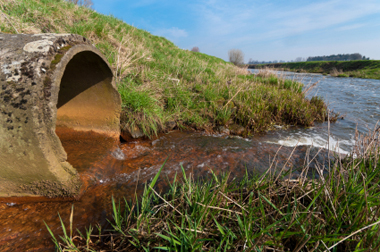
“Save the Bay” bumper stickers can be seen throughout Virginia, West Virginia, New York, Maryland, Delaware, the District of Columbia, and Pennsylvania. The bay to be saved is the Chesapeake. The Chesapeake Watershed, which comprises these states, feeds small streams and rivers that eventually flow into the Chesapeake Bay. One of the sources of bay pollution is untreated wastewater. The city of Lancaster, Pennsylvania (pop. 59,322), recognized the impact of its outdated combined sewer system, which collects and transports both rainwater and domestic sewage. The system becomes stressed when there is heavy rain, resulting in approximately 1 billion gallons of untreated wastewater annually flowing into the Conestoga River and then to the bay.
Although the city has invested in upgrades to its existing gray infrastructure by adding storage and increasing treatment capacity, the costs are high and untreated sewage is still entering the Conestoga River. Deciding that investing in infrastructure alone would not solve the problem and recognizing that it is an extremely costly approach, the city decided to also attack the problem with green infrastructure methods of storm water management.
In addition to the environmental benefits of a green infrastructure, city leaders recognized the economic benefits as well. A green infrastructure reduces costs of storm water management and increases property values.
So what exactly is a green infrastructure?
- Porous pavements that allow water filtration.
- Rain gardens, which are designed to capture and filter rainwater and make it available for nearby plants and trees, while preventing polluted rainwater from flowing into storm drains.
- Tree-filled, so that the tree canopy can manage storm water runoff.
- Green roofs, which cool buildings, and sidewalk planters.
- Cisterns and rain barrels.
Does it really make a difference?
Yes. The city of Lancaster Green Infrastructure Plan estimates” that an expanded tree canopy that will manage storm water runoff for approximately 45 acres of impervious area.”[1] Parking lots will be retrofitted as they are in need of repaving. The retrofits will eventually manage runoff from 130 acres of privately-owned parking lots. A porous basketball court and infiltration bed is estimated to reduce runoff by 700,000 gallons each year, and the cost to design and build it was half the cost of a gray infrastructure to achieve the same thing.
Resources for Residents
Extensive resources are available on the city website, along with the complete green infrastructure plan. Many communities will find the plan and resources useful as they address storm water and other issues affecting water quality.
[1] Executive Summary Green Infrastructure Plan, March 2011
New, Reduced Membership Dues
A new, reduced dues rate is available for CAOs/ACAOs, along with additional discounts for those in smaller communities, has been implemented. Learn more and be sure to join or renew today!
